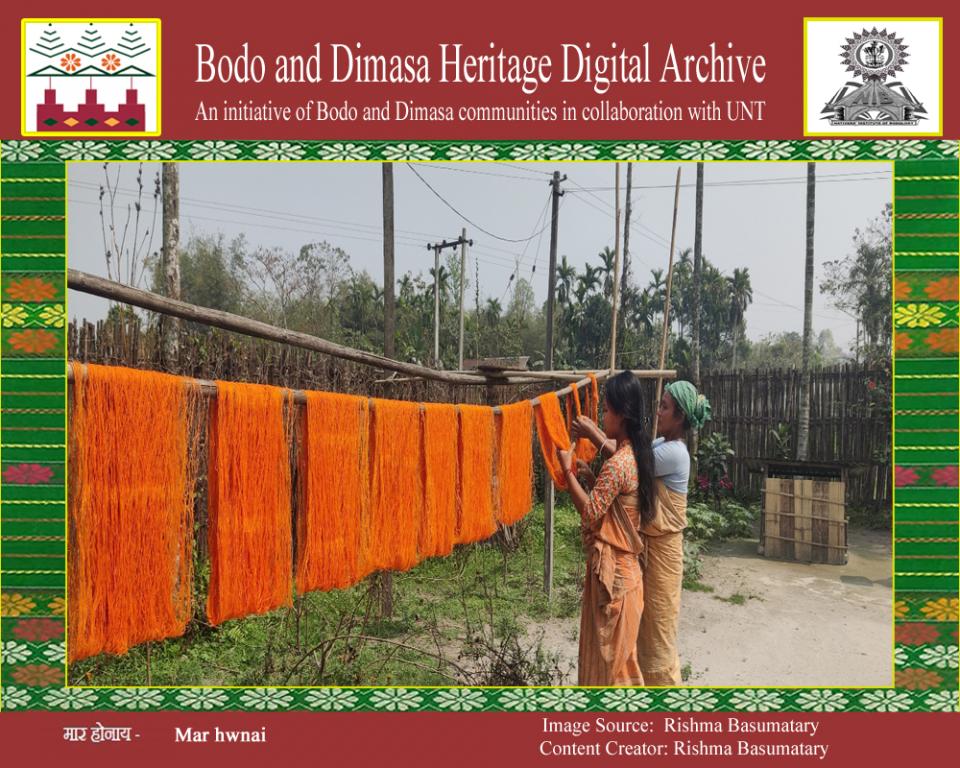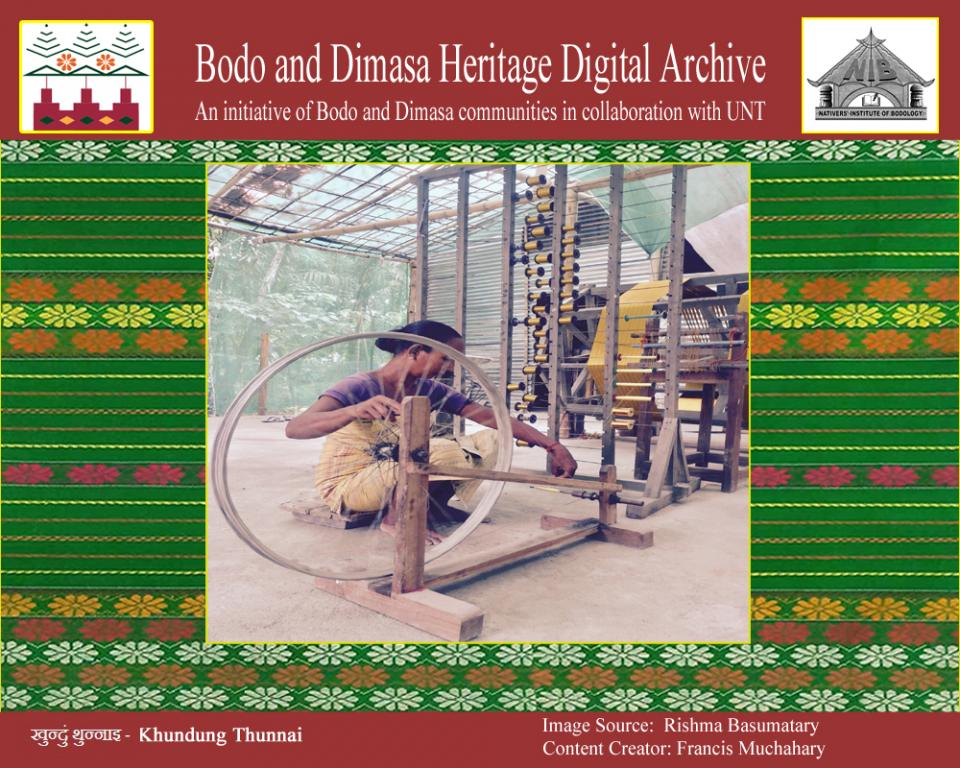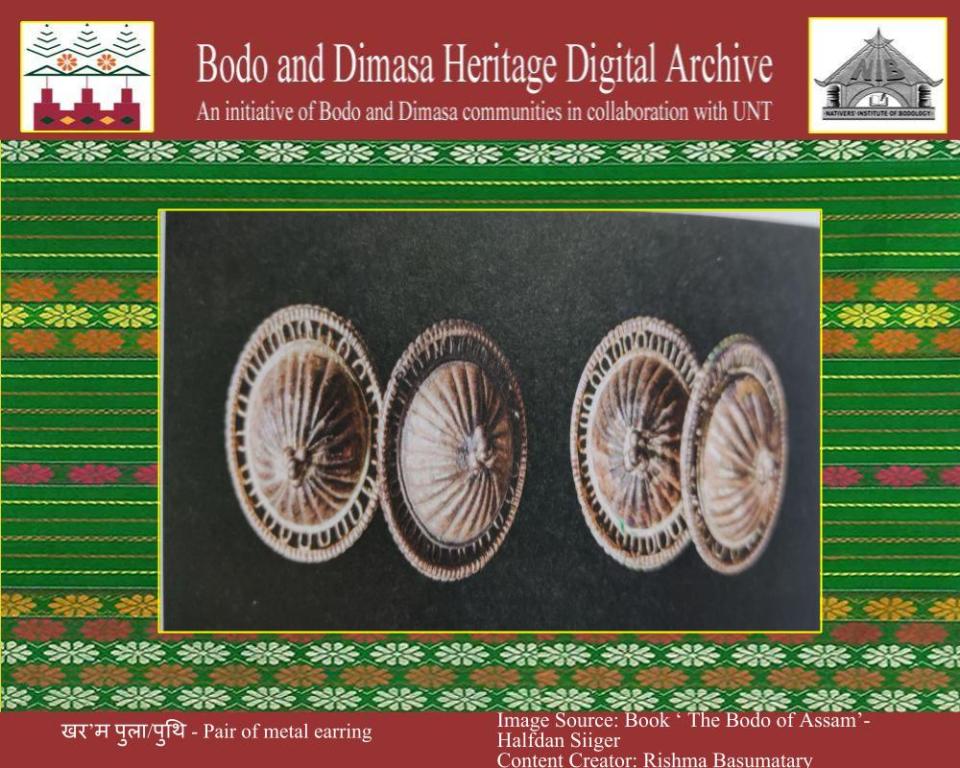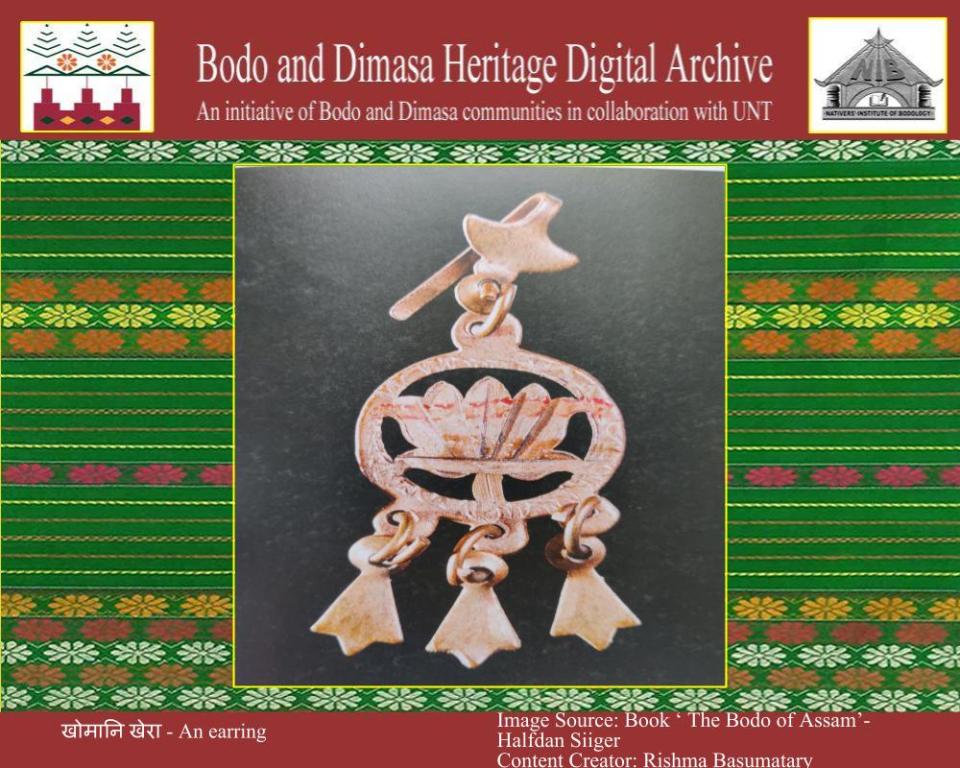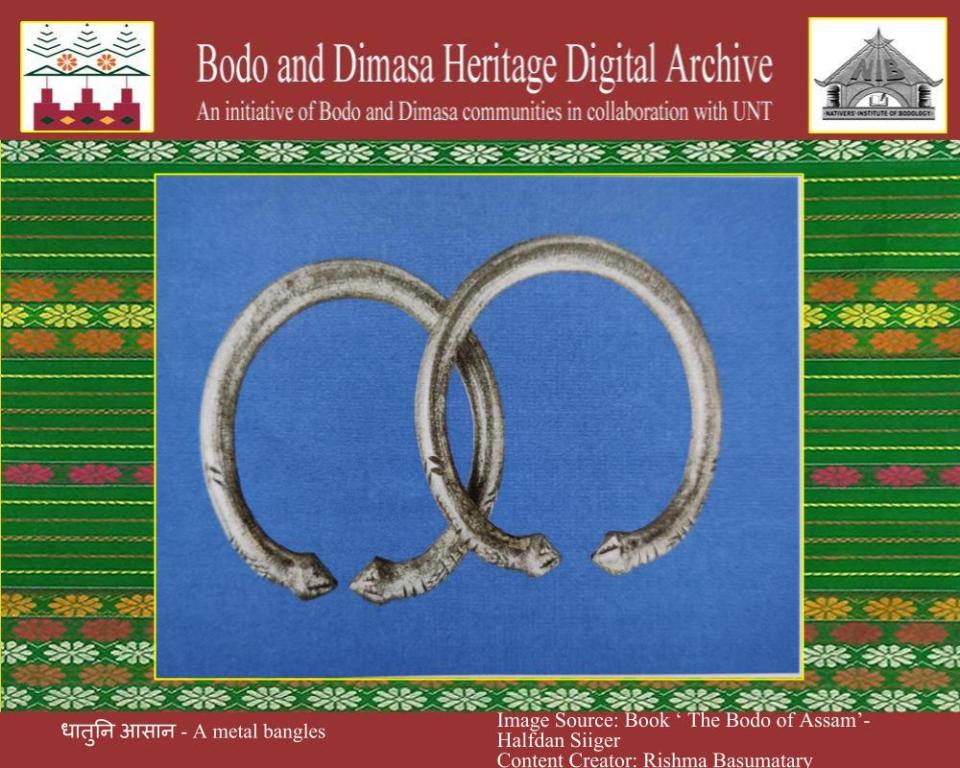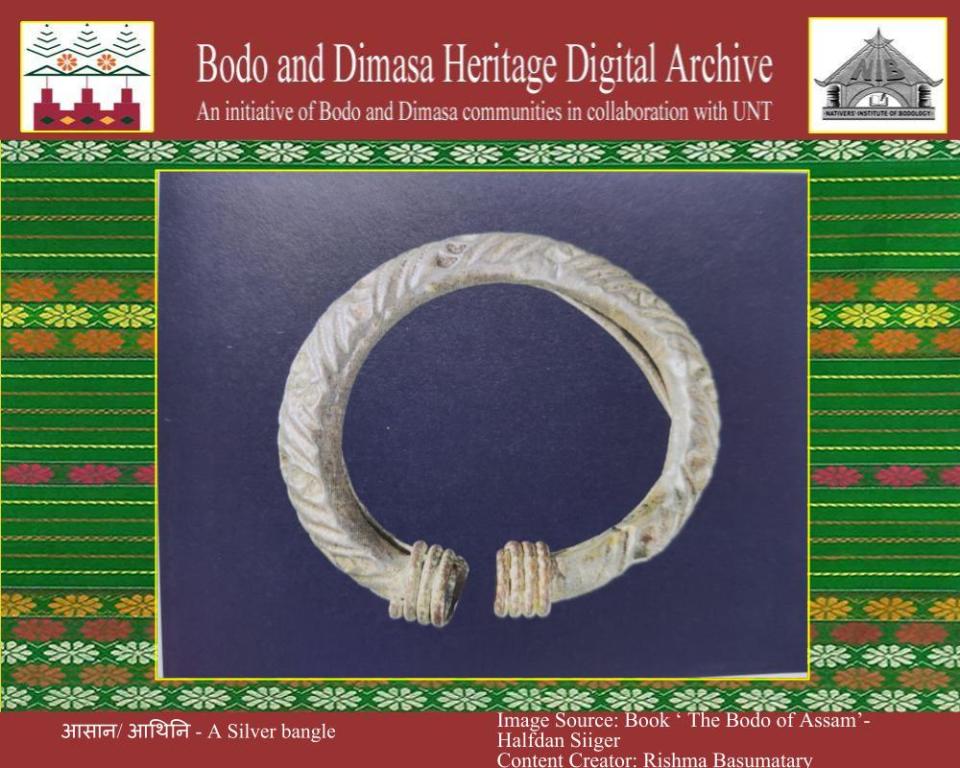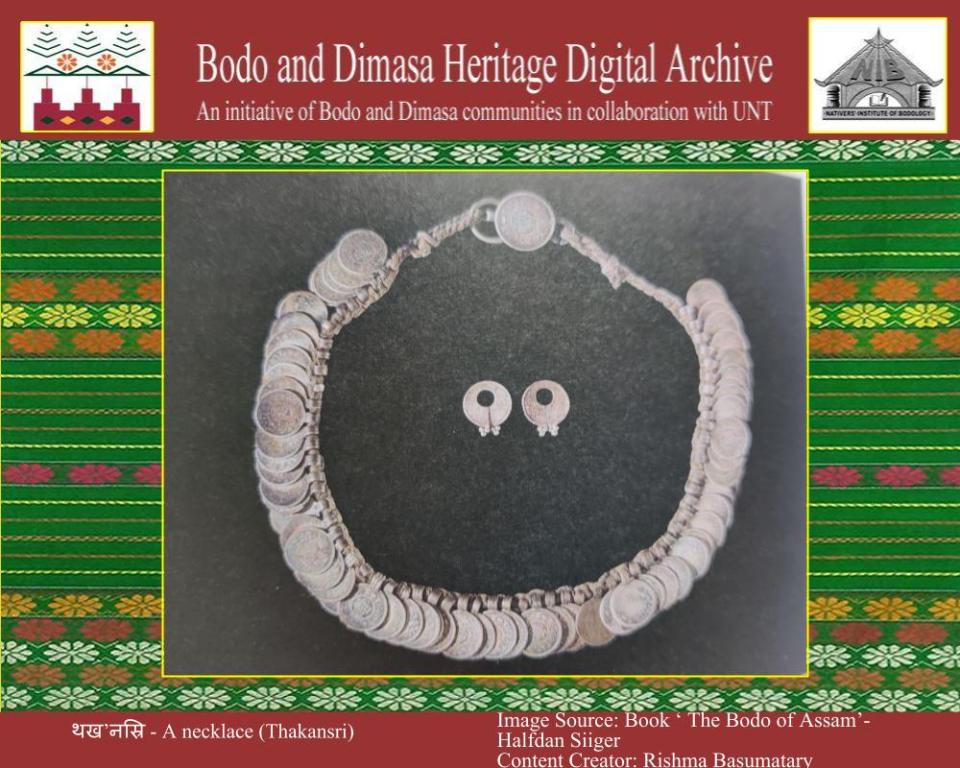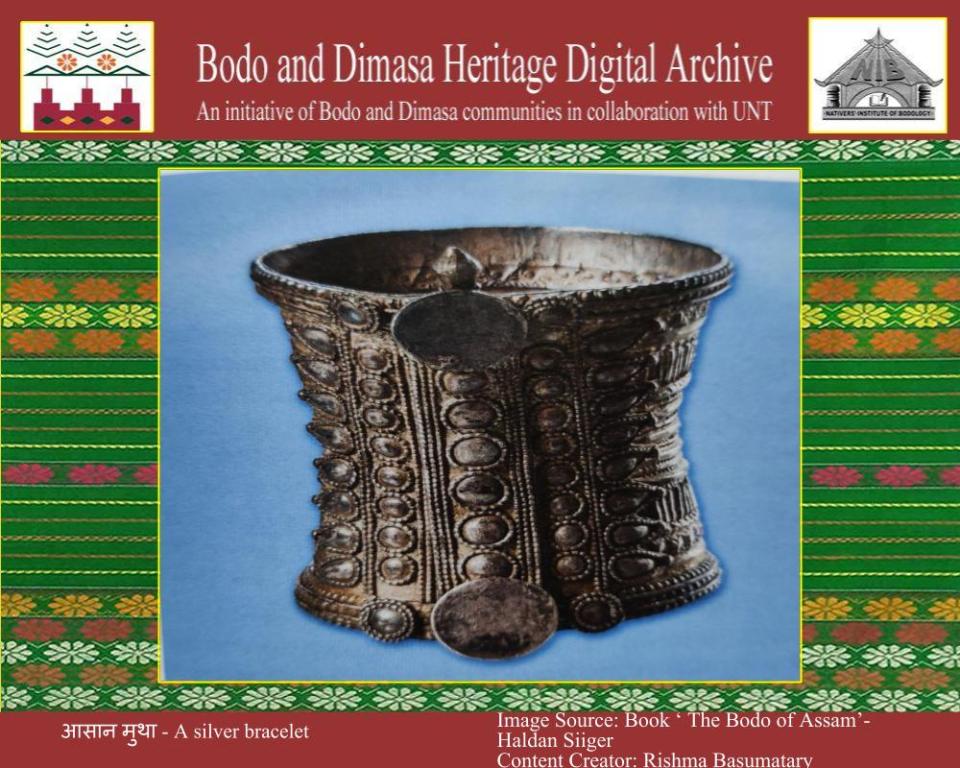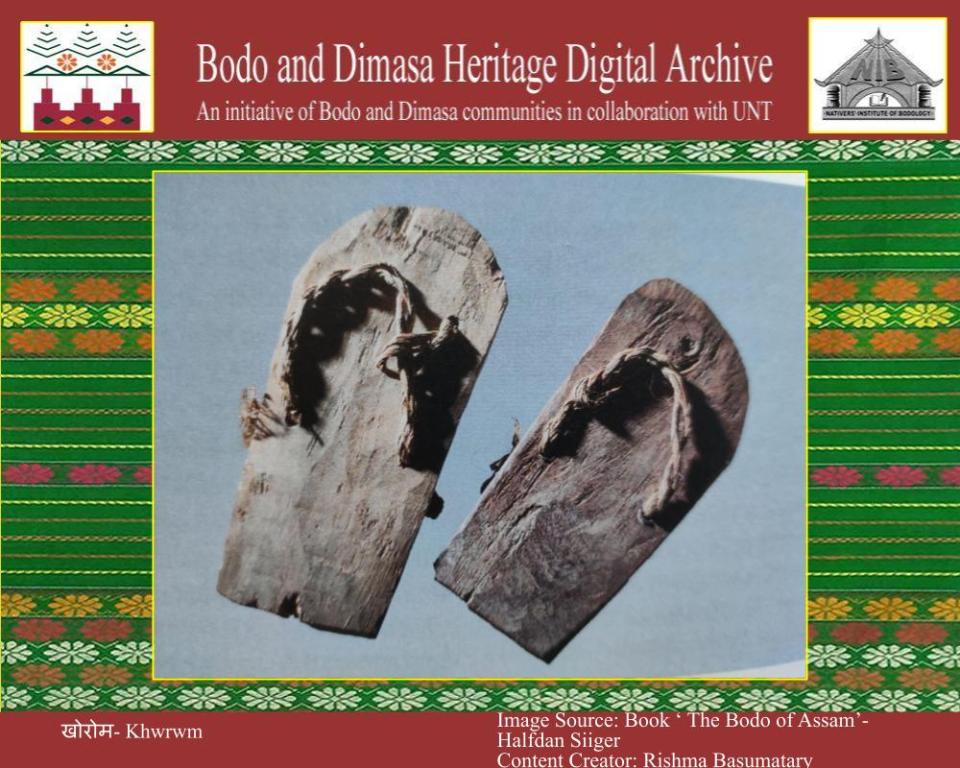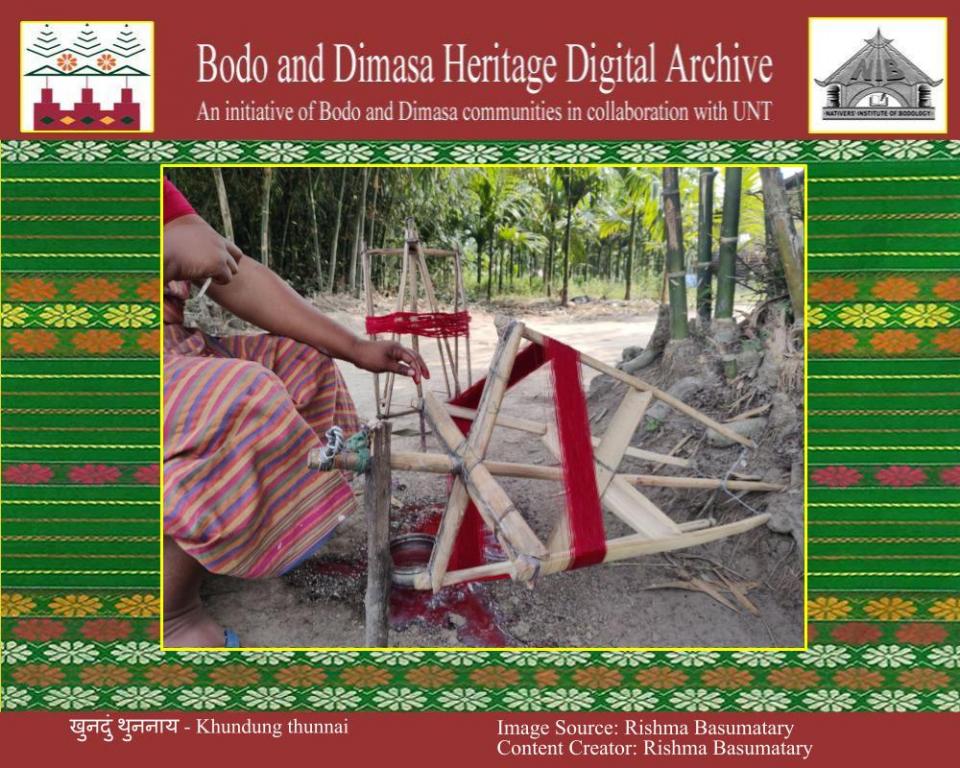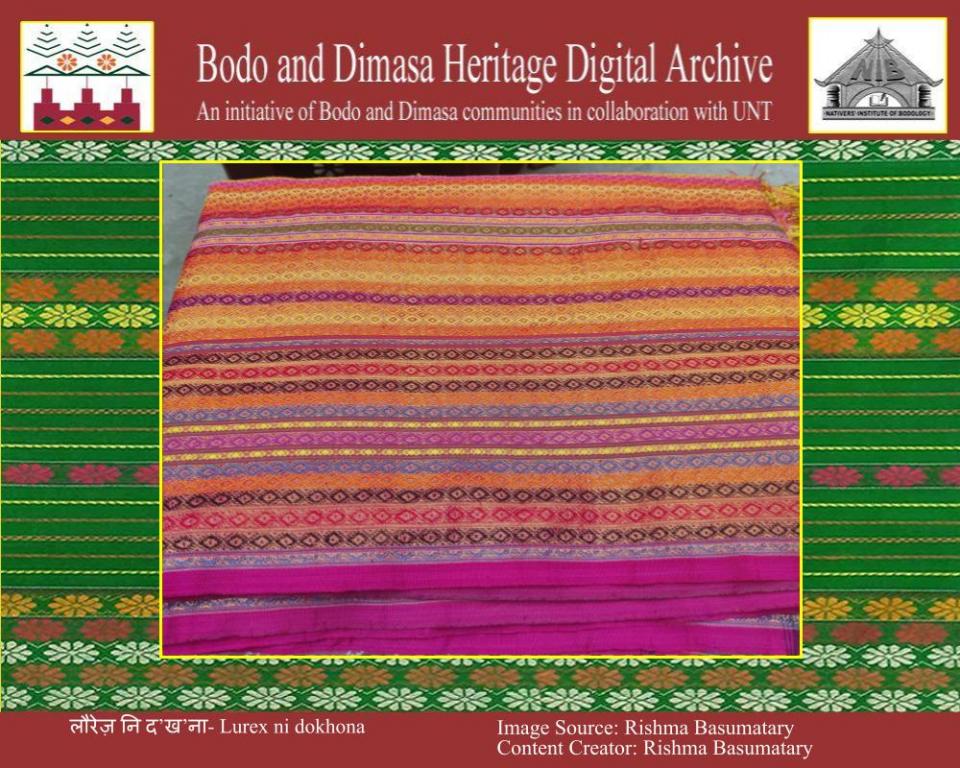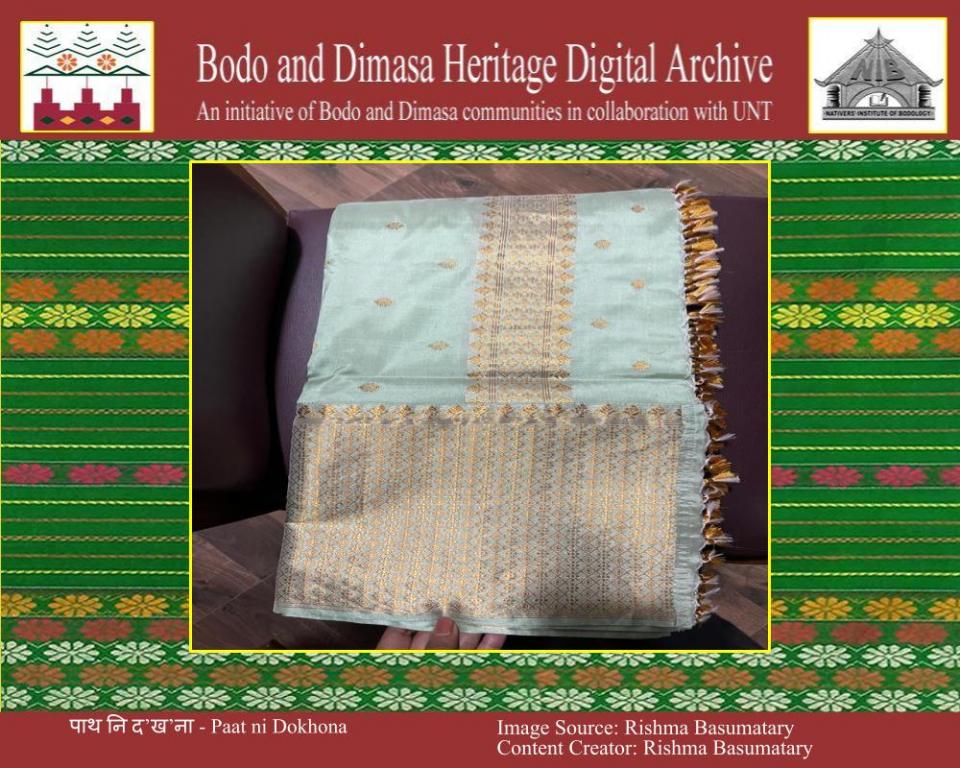Browse Digital Heritage
Digital Heritage
Community
बर' BodoCategory
Dress and Ornaments, Tools and Instruments, Traditional PracticesSummary
Starching is the process where yarn/thread produced is wound on a spool to make a wrap. In order to make the thread stronger it is boiled with rice or flour and water. The yarn or wrap is taken out from the water and dried up in the sun. Digital Heritage
Community
बर' BodoCategory
Dress and Ornaments, Traditional PracticesDigital Heritage
Community
बर' BodoCategory
Dress and OrnamentsSummary
These are only worn by women and usually given to the women at marriage. Digital Heritage
Community
बर' BodoCategory
Dress and OrnamentsSummary
A flat ring metal with a stylized flower, three pieces of metal as decoration, and a hook for the lobe of the ear worn by women.Digital Heritage
Community
बर' BodoCategory
Dress and OrnamentsSummary
An open metal bangles worn by womenDigital Heritage
Community
बर' BodoCategory
Dress and OrnamentsSummary
The bangle is slightly irregularly formed ring made of a length of sheet silver where the pattern of the outside of the ring has been hammered in diagonal lines of two grooves passed by a slight chisel, changing with a line of 6 to 7 square holesDigital Heritage
Community
बर' BodoCategory
Dress and OrnamentsSummary
A necklace worn by women made of one big coin and 62 small 4 annas coins (taka/rupee)Digital Heritage
Community
बर' BodoCategory
Dress and OrnamentsSummary
A metal bracelet worn by Bodo women.Digital Heritage
Community
बर' BodoCategory
People, Dress and OrnamentsSummary
A pair of wooden sandalsDigital Heritage
Community
बर' BodoCategory
Dress and Ornaments, Tools and Instruments, Traditional Practices
